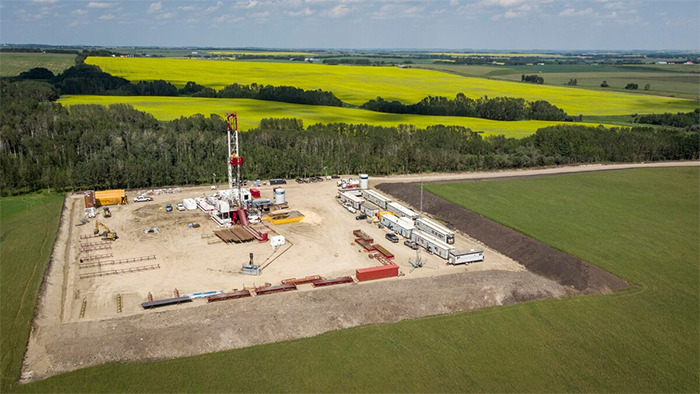David Detomasi, a professor of international business at Queen’s University, said in an interview with BNN Bloomberg Tuesday that Canada is uniquely positioned to supply gas through building facilities on the nation’s West Coast.
“It’s cheap to liquefy natural gas in Canada, we’re cold. It’s less expensive to do it and we have a shorter route to get there,” Detomasi said.
“If you want to get gas to Asia, there are only so many tankers of liquefied natural gas you can get through the Panama Canal. It’s way faster and way cheaper if you build some facilities on the West Coast. Canada could do that well.”
However, Detomasi said Canada will have to build the infrastructure first if it wants to benefit from large-scale LNG exports, as other countries are moving to “steal most of the market before Canada can even get there.”
Additionally, there has been a recent change, where energy security is now a key priority around the world, according to Detomasi.
“Canada’s contributions to those things [energy security] can be significant if we can get our oil and gas to shores and on market. Now I think the tension is people do not all agree on urgency, because other countries are getting in the game,” he said.
Detomasi’s comments come amid efforts by Mexico to become a top fuel exporter around the world.
According to Bloomberg News, last year Mexico had a total of eight proposed LNG projects, which would have a cumulative capacity of 50.2 million tons. Some of those projects were scheduled to come online in 2023.
However, Detomasi said that Mexico’s efforts around LNG mainly involve re-exporting U.S. natural gas.
Government Response
LNG could potentially reduce reliance on Russian gas and enhance energy security, as well as reduce the use of higher-emitting fossil fuels like coal while preventing energy poverty, Keean Nembhard, a press secretary at Natural Resources Canada, said in a statement to BNNBloomberg.ca on Friday.
“But projects must be assessed to be environmentally, economically and socially responsible. Project investment decisions are made by proponents based on their ability to comply with federal and provincial regulatory standards and be competitive within the global market,” he said.
The federal agency says the West Coast now has eight LNG projects in various stages of development, with operational targets ranging from 2025-2030.
Nembhard said Canada’s East Coast now has two LNG projects approved.
“New LNG projects need to demonstrate best-in-class performance that align with Canada’s climate commitments, displace higher emitting energy sources like coal and unabated natural gas, and include pathways to future proof investments to align with low-carbon fuel demand, such as hydrogen, as markets develop,” Nembhard said.
Economic Issue
Detomasi said that Canada’s lagging LNG industry is a symptom of broader economic issues, which include reductions in foreign direct investment, competitiveness, and labour productivity.
He said these broader economic conditions have an outsized impact on the oil and gas industry due to a reluctant government.
“You have a growing reluctance, at least among the Canadian federal government as being seen to be reinforcing a carbon-based economy when it’s made pledges to move away from carbon as fast as it can,” he said.





